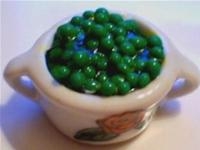The Asa diet, which has taken social media by storm, allows participants to eat as many bananas as they want in the morning, stopping when they feel about 80% full.
The banana diet for breakfast was developed by Japanese pharmacist Sumiko Watanabe in 2008 and is also known as “Asa Banana Diet.” “Asa” means “morning” in Japanese. Following this diet, Watanabe’s husband successfully lost 17 kg.
The banana diet gained popularity after they shared their weight loss story on Mixi, Japan’s largest social networking site. Bananas quickly sold out at local grocery stores as many turned to them for dieting. Currently, this diet is trending on social media in regions such as Hong Kong, Taiwan, and Southeast Asian countries.
Bananas are a source of fiber and nutrients, providing energy for a healthy morning while also creating a feeling of fullness that lasts longer. This helps participants avoid overeating. The fruit is also rich in potassium, low in cholesterol, sodium, and saturated fat, aiding in body fat regulation and detoxification.
According to Watanabe, the fiber from the fruit accumulates in the stomach, leading to prolonged satiety. Bananas also contain resistant starch, which ferments in the digestive system and accelerates fat burning.
The appeal of this diet lies in its flexibility and simplicity. Participants can eat as many bananas as they desire for breakfast and drink water at room temperature. Guidelines suggest that after 15 to 30 minutes, you can enjoy ginger tea or other warming drinks to heat the body from within. The Asa diet also allows for a light snack each day, such as candy or chocolate.
A list of foods to avoid on the Asa diet includes dairy, dairy products, fried foods, cookies, pizza, processed foods, and fast food. Watanabe does not establish a strict dieting plan. For lunch and dinner, individuals can eat anything they like, except for restricted items. However, it is advised not to eat after 8 PM, avoid alcohol and caffeine, and only drink water.
Participants should also stop eating when they feel about 80% full—a principle that aligns with the ancient Japanese concept of hara hachi bun me. Residents of Okinawa—one of the Blue Zones (areas with a high number of centenarians)—frequently practice this.

Bananas are a food rich in potassium and fiber. (Photo: Pexel).
Traditional Indian medicine also supports a similar principle, stating that individuals should fill about one-third of their stomach and drink water for the remainder. Indian sages living in the Himalayas are known for their longevity and good health, attributed to this practice.
According to nutrition experts, the focus of the Asa diet is on health, portion control, prioritizing nutritious foods, and avoiding greasy foods. Participants are also advised to keep a food diary and ensure adequate sleep.
Nutritionist Ruchika Sodhi from the University of Delhi notes that this diet is entirely based on conventional principles and the traditional lifestyle of Japanese people, which is considered healthy.
As with any other diet, the level of success also depends on individual lifestyle and physical activity levels. According to expert Sodhi, this is a starting point for weight loss journeys. However, long-term success requires more comprehensive approaches, such as regular exercise and a balanced, varied diet.
While the Asa diet is quite good, Sodhi recommends that individuals consult healthcare professionals before making significant changes to their daily lifestyles.
Since bananas contain a lot of sugar, experts advise that diabetic patients should not follow the Asa diet. An average banana contains about 120 calories, and overeating can lead to weight gain.
Simply eating bananas may lead to protein or micronutrient deficiencies, affecting overall health. For a diverse diet and sustainable weight loss, expert Sodhi recommends incorporating various fruits, vegetables, lean proteins, and whole grains.




















































